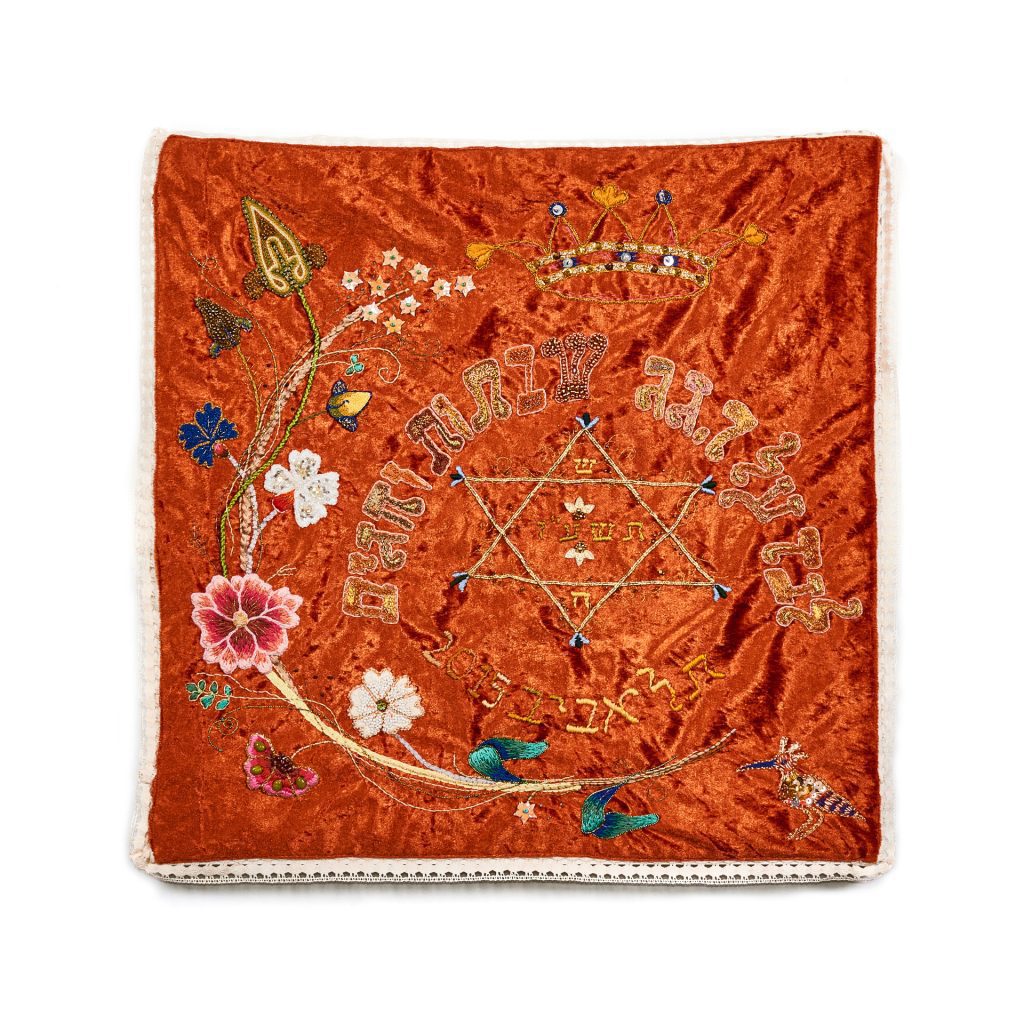Itamar Sagi )b. 1966(
Alone on the Roof, Sabbaths and Holidays, 2015
Synthetic velvet, cotton threads, gilded threads and lurex threads,
gilded ribbons, glass beads, sequins, linen fabric, linen lace, wick,
industrial ribbons
Courtesy of the Leonid and Tatiana Nevzlin Collection
Must Know
A challah cover is a special cloth used to cover the two loaves (challah) set out on the table at the beginning of a Shabbat or Yom Tov meal. The placement of the challah under the challah cover and over the Shabbat tablecloth (or over a challah cutting board) recalls the Biblical story of the manna which the Israelites ate every day following the Exodus from Egypt. When Moses told the people about the manna, he said that it would fall for them every day of the week. However, in deference to the holiness of Shabbat, the manna would not fall on that day. Instead, two portions of manna would fall on Friday, enough for that day and for the Shabbat (Exodus 16:22-26). This is given as the reason for the use of two loaves at Shabbat and holiday meals, as the challot represent the double portion of manna that fell in honor of Shabbat.
Each morning the Israelites found the manna in the fields, encased in two layers of dew to preserve its freshness. Thus we see that the dew fell upon the ground and the manna fell upon it, and then dew fell again upon this, and so it was as though it were carefully packed in a chest .Thus, we place the challot beneath a challah cover and over a tablecloth (or challah board) to recreate the miracle of the manna at our own Shabbat tables.[6]Covering the challah so as not to “shame” it while the wine is being blessed has been cited as an object lesson for the importance of not shaming one’s fellow humans.
More Info
The title of the work is based on the song “Alone on the Roof, Shabbat and Chagim” by Israeli songwriter, Yaakov Rotblit (1987) and sung by Yehudit Ravitz. The song tells the story of a lonely woman looking at the happy family of her lover which she is not part of. Shabbat tends to be family-centric causing many singles to feel unsupported and on the periphery of the community. Including this piece in our exhibition makes the statement that Shabbat is truly for everyone, and sometimes Shabbat can be lonely.
Itamar Sagi is a textle designer artist, developing a new embroidery language. he uses embroidery as an art and design form, taking this craft to the next level. Traditional Judaica always places the main symbols in the center in a very symmetric composition. This work is asymmetric and lopsided sharing with us the feeling that the world is not always a perfect space. You can see another of his beautiful creations, a Torah Mantle, in the Family Synagogue Hall on the First Floor.

